How the burger became king in Melbourne
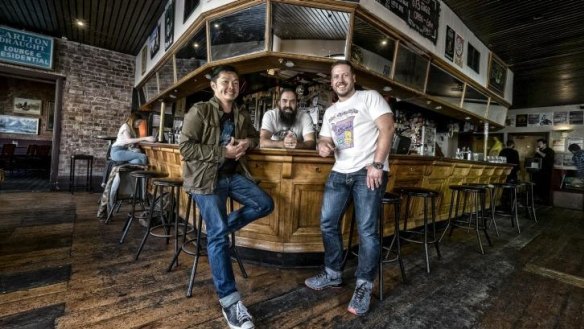
- Best burgers: Seven burgers in seven days
- Huxtaburger chef road-tests McDonald's Create Your Taste burgers
Melbourne is living and eating in the Burger Age. The humble sandwich, made by simply placing a cooked ground beef patty inside a sliced bread bun, has become an inescapable, booming aspect of the city's daily life. We grab a burger on our lunch break, after the footy, or before a night out. They can be mass produced or artisanal, a healthy option or a towering indulgence that can terrify a cardiologist.
There are burger joints beloved of hipsters, familiar milk bars redolent of an earlier age, and chains both old and new. You can get a $24 wagyu hamburger at Neil Perry's exclusive Rockpool restaurant at Crown, or a $5.50 quarter pounder at any McDonald's outlet. The burger leaps suburban boundaries and social strata. "Burgers fix everything," it says on the window of Hello Sam, a gourmet burger bar on South Yarra's Chapel Street, and given how many we're consuming they may be right.
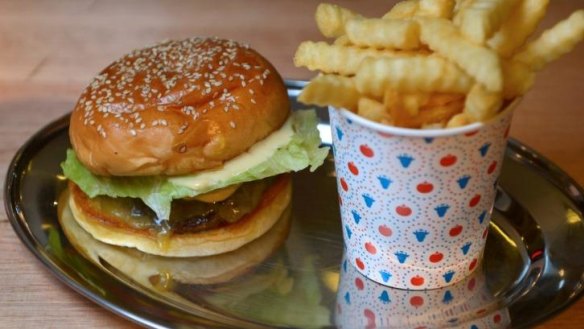
The burger – in Australia we've ditched the 'ham' – has a disputed etymology which stretches back to America at the end of the 19th century, but the burger's current rise to prominence in Melbourne began in December 2011, when chef Daniel Wilson and his partners at the Collingwood restaurant Huxtable opened the first Huxtaburger, an offshoot dedicated to making burgers with a restaurant mindset and a then $10 price point.
"When we decided to do Huxtaburger we wanted to take the sensibility of the fish and chip shop burger and mix it with the training I'd done in America," Wilson says. "At the fish and chip shop they always put oil on the bun on the flat grill, so we do that with clarified butter on a soft, slightly sweet bun like they use in America."
While Huxtable closes at the end of this month, having survived multiple dining eras, Huxtaburger has flourished, now boasting five outlets. With its ironically coded menu – the burgers are named for characters on The Cosby Show – upbeat atmosphere and dedicated preparation, Huxtaburger offered a new model for the burger, bestowing welcoming fare from a trained kitchen, that's increasingly been taken up and expanded upon over the subsequent years. Huxtaburger was the juicy, cheese-laden equivalent of alternative rock and independent cinema.
"We're a culture that doesn't want same, same, same," explains Dr Lauren Rosewarne, a senior lecturer in the School of Social and Political Sciences at Melbourne University. "People are saying, 'I don't want to look like everyone else, I don't want to eat like everyone else'."
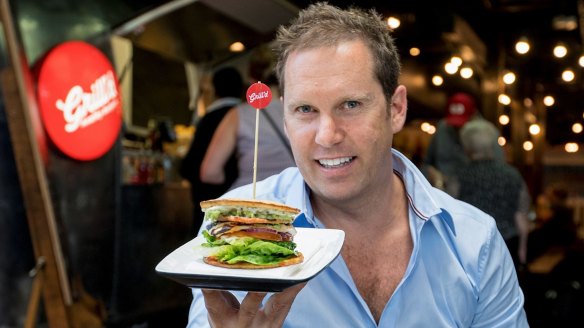
For many years a burger was often just something you got at a fast food chain such as McDonald's or Hungry Jacks. The price was cheap, the quality uninspiring, the familiarity welcome; global food for a global village. But the reign of Big Burger locally hasn't just been undercut by independent stores, there's also been the rise of Grill'd, a burger restaurant brand launched out of a single Hawthorn site in 2004 by Simon Crowe (pictured above), a burger enthusiast who wanted an enticing, nutritious meal combined with the engaging service ethic he so often encountered living in Milwaukee, America, while working for the Foster's brewing company.
On a recent Wednesday morning Crowe was enthusiastically explaining the philosophy behind a newly opened Grill'd restaurant in Swan Street, Richmond. It's one of now 112 Grill'd sites, 35 of which are in Victoria, and he pointed out design elements – the company uses four different designers to avoid a utilitarian visual identity – as the staff undertook the day's prep in the open kitchen near a very prominent licensed bar.
One day, if not already, Grill'd will be a case study in business and marketing degrees, having identified a yawning gap in a huge but narrow market and connected it to a valuable twentysomething demographic. Grill'd also provided the communal pleasure of eating – and drinking – out less any immodest expense, which struck a chord after the global financial crisis took hold in 2008.
"We didn't suffer the GFC here, but in America particularly there was a harking back to comfort food, harking back to what makes you feel safe," says Crowe, who mixes a friendly amiability with a CEO's mission-driven focus, "and from that point the burger started a renaissance''.
Grill'd has tied its popularity, and its growth, to a focus on healthy eating, emphasising local produce at an individual outlet level and an untainted supply chain. Crowe believes that Australians increasingly distinguish themselves not by where they live or their cultural heritage, but by their health allegiances. Six million Australians, he points out, are interested in or looking at lower carbohydrate diets, 4 million are gluten-free or shopping in a gluten-free manner, 2 million are interested in vegetarianism, while half a million occupy the paleo space.
"That's how people define their identity," Crowe says. "Once upon a time it used to be, 'Am I a rocker, am I a mod, am I a punk?' Now, what we are on the outside means less than what we are on the inside. Food choices and food lifestyle choices are how people express themselves."
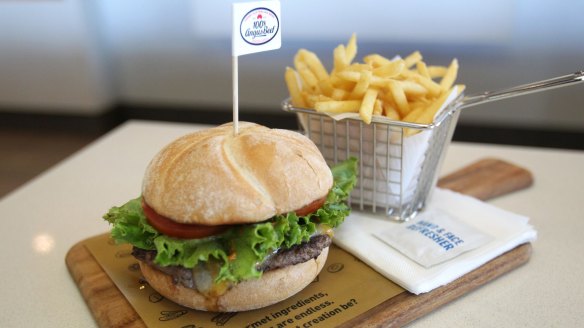
The rise of Grill'd and the wider independent burger culture has not been lost on McDonald's, a multinational aware that some twentysomethings consider the fast food chain's products anathema. Last year McDonald's introduced "Create Your Taste", an initiative that seemingly contradicted its own ethos. Customers could design and order their own burgers from a wide menu, which were then made to order and delivered to their table. The marketing was anti-marketing: "How very unMcDonald's".
The key concept for McDonald's is customisation, they're offering choice instead of certainty. "It panders to the egos of the individualists – the idea is you're doing something new and that you're not like everyone else eating McDonald's," Dr Rosewarne says. "You're having something that caters to your particular needs and desires."
It's unclear yet how Create Your Taste is faring commercially (McDonald's was not able to provide an interview subject or answer written queries by deadline for this story), but a judgment on execution and taste is certainly possible. Wilson was working at Huxtaburger's Eastland outlet in Ringwood, so on his break one sunny afternoon we took a five-minute walk to a nearby McDonald's, where he stood in front of a console and pondered what makes for a memorable first bite.
Huxtaburger's Daniel Wilson tries McDonald's version
"A burger must be the sum of all of its parts. There's nothing worse than having a rissole inside a loaf of bread. Everything has to be there for a reason and in the right quantity," he says. "The bread is there to hold everything together – it shouldn't be 40 per cent of the whole burger. When you take a bite you should be able to taste everything. It's like an orchestra – you have to be able to hear all the instruments without one being overpowering."
Wilson was swift in his touch screen choices, starting with a beef patty and brioche bun and adding mayonnaise and ketchup – "I'm a condiment freak" – before choosing pickle, tomato, beetroot, lettuce leaf, Coon cheese, crispy bacon, egg and grilled pineapple. He was duplicating one of Huxtaburger's standards, the Bills, or more traditionally a burger with the lot.
When it arrived on a wooden chopping board 12 minutes later at our outside table, Wilson sized it up with forensic care. "Looks OK," he murmured before opening it up, only to remove several doleful lettuce leafs. "If my staff served those I'd be pretty disappointed," he noted. "Tomato looks OK, but they've put the tomato sauce and the mustard together. The sauce always goes next to the meat."
McDonald's can promote bespoke burgers, but can their staff cook them? Wilson, who ate McDonald's as a boy growing up in New Zealand, was doubtful. Two small pieces of bacon were "a bit pathetic", and the patty was too small for the bun because it had shrunk on the grill. He always tells his staff to start with a patty larger than the bun. Wilson took a sizeable bite. "The egg is overpowering," he decided, adding that the pineapple was tinned and the meat "nondescript".
Wilson's McDonald's Create Your Taste burger had cost $11.55, while a Bills at Huxtaburger was $14. The saving was small, the drop-off in taste and quality not so small. If he had to eat at McDonald's in the future, Wilson would probably just buy a standard Big Mac.
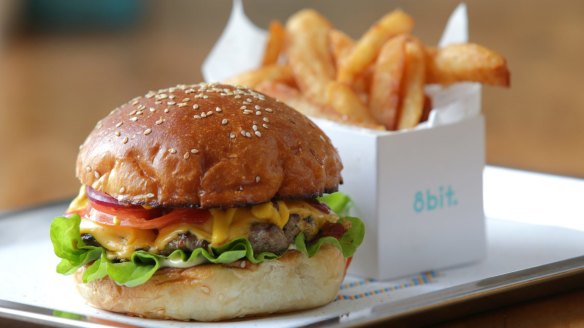
Even as McDonald's responds to the likes of Grill'd, the smaller end of the burger business is becoming increasingly frenetic. A favourite of aficionados and casual burger enthusiasts alike is 8bit, a retro arcade game themed take on American diner food that opened in Footscray in May 2014 and soon had lines going out the door for a table and burgers such as the Double Dragon (double beef, double cheese and double bacon).
Co-owner and head chef Shayne McCallum had served as a sous chef for Wilson at the Graham Restaurant in Port Melbourne years ago, and never expected to end up outside fine dining. Now he's juggling two 8bits, with a new outlet opening prior to Christmas in the CBD on the north-west corner of Swanston and Little Bourke streets, both stocked out of a central kitchen in Fitzroy, while each week brings one or two franchising inquiries.
The CBD fit-out for 8bit cost just under $500,000, while the rent is quadruple that of Footscray. These are considerable amounts when your success is based on the popularity of your burger.
"It's not that hard to make a burger – anyone can do it," says McCallum, who has a touch of Seth Rogen's boisterous openness, "And everyone has a different way they like them. The 8bit burger is how I like to eat them. I cook the meat all the way through because I'm going for a fast-food style."
8bit has benefited from the growing burger scene. "Burger heads," as McCallum affectionately describes them, are obsessive and communicative – the just presented burger on a plate is ready made for social media, especially Instagram, and there's an entire online subculture complete with popular bloggers and annual top 10 lists.
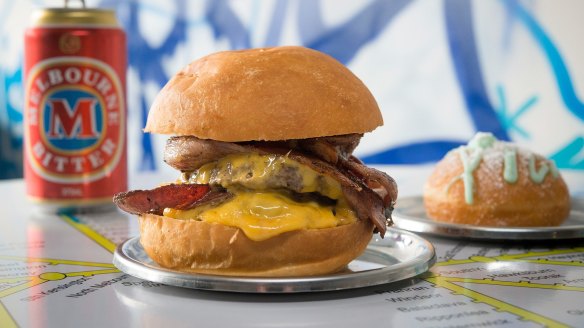
"It's all grown so rapidly," says Jimmy Hurlston, a law graduate turned burger aficionado who once ate 12 in a single day while on a mission to try every type Los Angeles had to offer. Hurlston is a partner in Easey's, the burger joint memorably situated in a converted Hitachi train carriage atop a five-storey Collingwood building, and a leading online presence as @jimmysburgers – his Instagram feed, a bountiful burger Bacchanal, has more than 54,000 followers.
"People are going about it from a financial point of view, not passion," Hurlston says. "In food trends it's passion that creates progression, and the lack of passion makes for products all too similar."
Burger joints, whether run by innovators or imitators, are starting to dot the landscape. Many proprietors are trying to claim a suburban shopping strip, getting first rights. Some stores are just knock-offs. McCallum is aware of a new burger cafe in Melbourne's north-west that has duplicated 8bit's menu down to the milkshake flavours. These are symptoms of an overload, a kind of tulip fever but with a lot more mustard, and it ignores the significant rise in the cost of wholesale meat over the past 12 months that has retail outlets struggling with their margins.
Have we reached peak burger?
"The places that do good burgers will continue, but the places that have popped up for a money grab won't," believes Hurlston, who's exporting Melbourne burger culture to a Sydney venue opening later this year. "We're starting to see that already, and it will become more obvious."
McCallum, who has run shifts at 8bit in Footscray that have turned out more than 1000 burgers in a single service, believes the Mexican food boom of a few years ago is analogous. The spread of Mexican eateries was culled, but the best endured and now Mexican food in Melbourne is a popular option without being a scene. American southern-style BBQ might be the next big thing, but the beef patty and bun is here to stay.
"The burger lets you hold essentially all the food groups in one hand without creating any dishes," says Hurlston, but like a true believer he can't resist an addendum. "Just don't use beetroot. It takes over a hamburger."
Restaurant reviews, news and the hottest openings served to your inbox.
Sign up